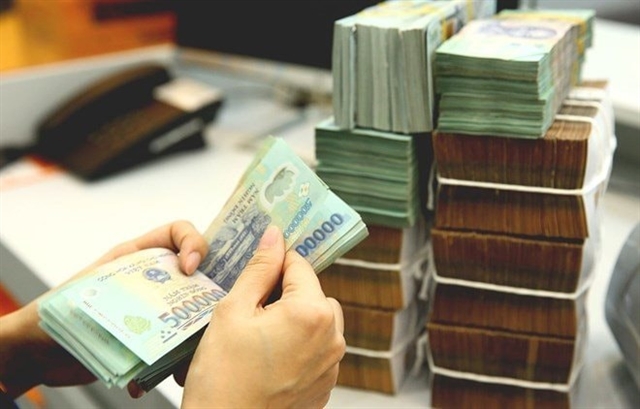 Economy
Economy
.jpg)
 |
| It is necessary to ensure the efficiency of credit use and direct capital flow into the Government’s priority areas to promote sustainable GDP growth according to the Government's long-term strategic orientation. — Photo nguoiduatin.vn |
Compiled by Thu Hà
Despite saying the credit growth target set for 2025 is reasonable, experts note that the growth must go hand in hand with credit quality and risk control to avoid bad debt increase.
The State Bank of Vietnam (SBV) has recently sent a document to commercial banks to publicly and transparently announce the principles for assigning credit growth in 2025. Accordingly, the expected credit growth of the entire banking system in 2025 has been set at 16 per cent.
Assessing the target, analysts say this is an appropriate growth rate and it is likely to be achieved.
According to analysts of the MB Securities Company (MBS), they believe the credit growth in 2025 will reach 15-16 per cent, based on two main factors.
First, the strong recovery of the Vietnamese economy in 2025, driven by improved production and trade activities as domestic and foreign demand increase. This will create conditions for the SBV to maintain a loose monetary policy this year.
Second, the high disbursement rate of public investment will create new jobs and support credit demand, in line with Việt Nam's economic recovery goals and the implementation of large infrastructure projects in the 2021-25 period.
Meanwhile, analysts from the ACB Securities Company (ACBS) predict that the target is achievable, as the corporate bond channel will find it difficult to recover strongly in the near future, so bank credit will still play an important role.
At the same time, ACBS’s analysts believe the real estate market will gradually recover in 2025, along with the Government's promotion of public investment, which will stimulate credit demand and support banks' lending yields in the second half of 2025.
Assessing the credit growth target, Dr Châu Đình Linh, a lecture at the HCM City Banking University, said there is a mutual relationship between credit growth and GDP. When credit grows, enterprises and individuals will have more capital to invest and expand business and consumption, which will help promote GDP growth.
GDP growth will promote credit growth. When the economic growth is higher, the capital demand will increase. Therefore, capital demand from the banking system will be promoted, Linh explained.
According to Linh, in previous years, the GDP growth rate was set at 6-7 per cent, and the corresponding credit growth rate would be 15 per cent. In 2025, the Government wants to see GDP growth rate of up to 8 per cent, so credit growth must also increase accordingly.
“The credit growth rate of 16 per cent this year is in line with the GDP growth target set by the Government for 2025,” Linh said.
Credit quality
However, Linh noted, when credit growth increases, it will be easy to also cause a corresponding increase in the bad debt ratio, if credit risk is not well managed. This will create negative impacts in the future, slowing GDP growth in the longer term. Therefore, credit growth needs to go together with credit quality and it is necessary to build an effective credit management and risk control system.
In addition, it is necessary to ensure the efficiency of credit use and direct capital flow into the Government’s priority areas to promote sustainable GDP growth according to the Government's long-term strategic orientation.
Sharing the same view, Dr Nguyễn Hữu Huân from the HCM City University of Economics, said that the credit growth rate of about 16 per cent is logical.
However, Huân also noted the growth rate of credit is not as important as the quality of credit. When credit flows into the speculative real estate market, economic growth will increase rapidly, but not sustainably. This has been proven in practice for many years. Therefore, credit growth must go together with quality management to avoid bad debts.
Deputy Governor of the State Bank of Việt Nam Đào Minh Tú also affirmed the 16 per cent credit growth is just a guideline number in management terms. The ultimate goal is to control inflation, economic growth and ensure the value of the Vietnamese đồng.
According to Tú, in 2025, commercial banks will self-determine and calculate loans when there is a need for capital. The SBV is looking to have credit management measures more suitable to the market mechanism, creating initiatives for banks.
However, Tú noted that the SBV will still have to control the increase in money supply, to ensure the target of controlling inflation and the safety of the entire banking system, especially for banks that are pouring capital into risky areas. — VNS
.jpg)



